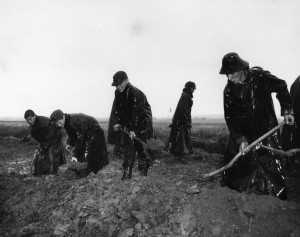Written by guest blogger, Ronald Rudin.
Over the past decade, I have been pre-occupied with various landscapes of importance to the Acadians, the French-speakers of Atlantic Canada. I began by looking at the site of the beginning of Acadie, Île Ste-Croix, a small island on the border between New Brunswick and Maine, and continued by examining the significance of Grand-Pré in Nova Scotia, from which many Acadians — including the fictional Evangeline — were deported in the mid-eighteenth century. Most recently, by means of both a book and a website, I have explored how Acadians developed a close connection with the territory that became Kouchibouguac National Park in eastern New Brunswick, from which over 1200 residents — mostly Acadians — were expelled in the late 1960s and early 1970s, making it a landscape that brought back memories of the deportation.
My article in the December 2015 issue of the Canadian Historical Review is part of a new project that focuses on the one remaining Acadian-constructed landscape from the pre-deportation period that still exists, over 250 years later. Most of the lands that the Acadians settled were marshlands that had been drained by means of a system of dykes, known as aboiteaux. These devices allowed water to be removed from lands along rivers in current-day Nova Scotia and New Brunswick that flowed into the Bay of Fundy, at the same time preventing the bay’s huge tides from submerging their lands once again. Most of the drained marshland was taken over by English-speakers after the deportation, but some of that land remained in Acadian hands, providing the subject matter for the 1955 NFB film, Les aboiteaux, which provides the focus for the article.
This was the first film produced with an original Acadian script. But quite aside from this distinction, the film — directed by Léonard Forest at the start of an important career as an Acadian filmmaker — tells a fascinating story about both the environment and Acadian society. By 1955, when Les aboiteaux was released, the system of dykes was badly in need of repair, a situation which had led in the 1940s to the creation of the federal Maritime Marshland Rehabilitation Administration. The MMRA proposed an ambitious program to repair the aboiteaux, thus challenging a four-century-long tradition of local control. And so we see the drama unfold in one Acadian community in New Brunswick when the aboiteaux are about to fail and the MMRA has to come to the rescue. What would happen to individuals such as Placide Landry, the central character in the film, who had been responsible for watching over the dikes? And what did the arrival of modernity mean for Acadian society as it marked the 250th anniversary of the deportation? Les aboiteaux is an important document showing the challenges faced by Acadians as they began their own révolution tranquille, as significant in its own right as the one emerging from Quebec.
Ronald Rudin’s article, “The First Acadian Film: Visibility, Modernity, and Landscape in Les aboiteaux” appears in the latest edition of the Canadian Historical Review. Read it today at CHR Online – http://bit.ly/CHR964_Rudin or on Project MUSE – http://bit.ly/CHR964PM_Rudin

Comments on this entry are closed.